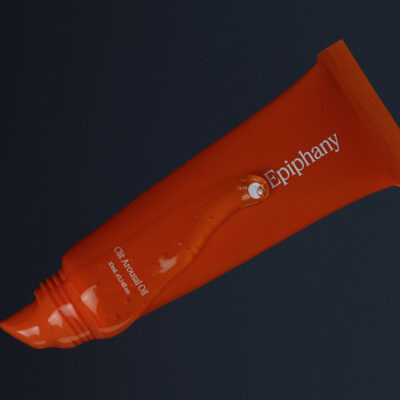
Tracking Upper Funnel Ad Dollar Spend For Brand Building
Growth is something almost every brand strives for, but investing in brand-building advertising, the effects of which may be difficult to measure and take substantial time to yield results, often is a difficult sell to internal stakeholders. CMOs and media buyers have to draw a clear line between advertising and sales.
However, the already messy consumer-buying journey is becoming harder to track, thanks to iOS updates and Google’s plan to eliminate cookies from browsers. Last-touch attribution, a model that gives 100% conversion credit to the interaction that happened directly prior to purchase, caused marketers to overweight the value of the bottom of the funnel.
Research from Paul Arpikari and Sellforte shows that last-touch attribution overestimates the impact of branded searches by 17X and underestimates the sales impact of online video by 2X.
“Amazon, Google and Meta are increasingly focused on multi-touch attribution and market mix models. Expect these terms to be used increasingly in the coming years,” says Mark Wieczorek, chief insights officer for e-commerce accelerator Front Row Group. “Everyone has a vested interest in making sure marketers have the tools they need to justify spending more across the funnel. Getting a holistic picture of where your ad dollars are being spent—and drawing correlations to what’s driving sales—will help marketers justify ad dollars throughout the funnel.”
Below, Wieczorek shares how to put together a plan that provides a holistic picture of spend, the customer journey and the levers to pull to drive marketing results.
Diagnosis
Front Row’s approach to growth centers on having a holistic view of a brand’s health and converting data into a single dashboard called Catapult. The information can go a long way toward answering questions about what’s driving sales, what’s limiting growth and what will fuel strategy.
Often brands that start with an always-on digital approach reach a performance plateau where they realize diminishing returns. Pouring incremental new dollars into search or paid social may not be the most efficient manner of driving sales.
If ads are becoming increasingly inefficient, it’s time to take a step back and assess the brand’s health from a holistic perspective. On the high end, a brand can commission studies such as focus groups and surveys to get feedback on where consumer sentiment is heading and what consumers’ media habits are.
For a more cost-effective approach, doing a deep dive into Google trends and Amazon reviews can give a sense of a brand’s health. Wieczorek asks, “Are people searching for your brand? More or less than before? Is it relative to the competition?”
A rich source of first-party or 1P data, Amazon isn’t just a search engine, it monitors what people buy and what their media consumption habits are. Amazon reviews are a great source of consumer insights into a brand and its competition. Reviews can pinpoint what makes products stand out from the competition and may uncover insights to help reposition a brand and products for increased success. Being armed with these insights, whether a brand does it with an in-house team or an outside agency, will prime it to make the best decisions.
“If you think in terms of the traditional marketing funnel, maybe you have an awareness problem—people aren’t searching for your brand,” says Wieczorek. “Or maybe you have a consideration problem. If you search for your product on YouTube, has anyone reviewed it? Or maybe it’s a conversion problem. Are people landing on your page and just not converting? Identifying and filling in the gaps is the first step towards a good strategy.”
Strategy
Using qualitative and quantitative research from the Diagnosis phase equips a brand to make the most strategic choices.
Qualitative research allows a brand to ideate on messaging that resonates with the consumer. According to The Ehrenberg Bass Institute, most ads are only 16% effective. Some 40% of people remember the ad the next day, and only 40% of those people can link the ad to the brand. Research by Kantar indicates that the quality of the creative is a 12X multiplier to advertising effectiveness and is the most important driver of advertising success behind brand size.
Once a brand lands on a creative message that works, figuring out where and how to support that creative with ad dollars is the next big challenge. This step is where survey data or 1P data can help with targeting. The targeting should reflect consumers’ media habits. If a brand doesn’t have the resources to commission a study, simply talking to customers can help.
Wieczorek says clients frequently come to Front Row asking, “I know what number I want to hit next year, how do we get there?” In order to get “there,” brands need an understanding of how their sales and media channels are performing together to begin pulling the most effective levers. “Did increased engagement or media spend last week lead to an increase in sales this week?” he probes. “The gold standard here is a market mix model, which is often difficult and expensive to implement, but there are other less expensive ways to measure success.”
Measurement
Approach 1: Incrementality And Turn Off Testing
One of the simplest approaches is assigning an incrementality score to each campaign. The incrementality score is the percentage of sales the brand would’ve lost had the ad not been running. If the ad is attributed with $10,000 sales a day, but only $2,000 would’ve been lost had the ad not been running, then the campaign is 20% incremental.
There are three basic methods for assigning incrementality.
- Benchmarks/guesstimates. Either from previous experience or reading through case studies, a brand can come up with estimates for how incremental each campaign type is. If it has nowhere to start, the 80/20 rule is a decent place to do so. Assign 80% to non-branded searches, 20% to branded. A brand can set similar values for targeting existing customer versus competitor or category buyers. While reality may differ from assumptions, voicing the assumptions is better than relying purely on last-touch attribution.
- Does the campaign report on new to brand (NTB) customers? If so, a brand can use that number. While it’s possible some NTB customers would’ve purchased anyway or the campaign convinced an existing customer to buy from you rather than a competitor, this number is a decent proxy for incrementality.
- Turn off testing. Pause the campaign for a day or week. What happened to overall sales? Did a brand get NTB sales? This calculation requires a bit of expertise with forecasting models, which can be as straightforward as using the forecast function in Excel.
Front Row uses an all-of-the-above approach to incrementality. “Some ad types give us enough reporting to get very precise on incrementality. For others we have benchmarks, and when in doubt, we do turn off testing,” says Wieczorek. “All of this informs our media buying strategies and budget balancing.”
Approach 2: Media Mix Model (MMM)
The goal of MMMs is to determine the incremental impact associated with marketing activities and use those findings to answer strategic marketing questions. They can be quite an investment in terms of both time and money due to hiring an outside firm or data scientist to conduct the work.
MMMs typically need two years of data to run properly and will need to contain as many touchpoints as a brand can build into it. Ideally, an MMM can address the four Ps: product, promotion, place and price. Where was the product advertised? Was it on sale or not? Where did the sale occur?
Wieczorek points out that MMMs can do a great job of teasing out causality. “More likely than not, the last touch didn’t ’cause’ the sale to happen. Each touchpoint should have some weight,” he says. “A well-done MMM can produce a model to explain which campaign caused the sales to happen and inform media buying going forward.”
But MMMs are far from perfect. Out of the box, they don’t typically account for things like running out of inventory as a consequence of supply chain issues or the time a brand had to recall inventory because of a labeling issue.
Done well, they can inform media budgeting by showing a brand where to invest the next incremental dollar and what return it can expect.
Laddering Up The Funnel
Armed with a diagnosis, strategic goals, creative concept and method for figuring out what’s driving sales, a company is ready to have a conversation about brand building.
The more sales and marketing channels it’s on, the more it will grow sales, according to Wieczorek. “Amazon and brick-and-mortar give consumers that many more opportunities to choose your brand,” he says. “At the same time, advertising on multiple channels makes your ad dollars work better.”
A “big campaign idea” that can flex to multiple platforms can do much to grow a brand. Wieczorek explains, “Ad campaigns are ‘platforms’ and being on multiple marketing and sales channels and tailoring that campaign for each platform is the best—and most efficient—use of your ad dollars.”
Research by Kantar shows that between three options—one creative used across multiple platforms, a unique creative for each platform and one creative modified to suit each platform—the third with creative modification works 13% better on average than a single creative. Producing unique creative for each platform underperforms a single creative by 33%.
With a multichannel (media + sales) reporting tool such as Front Row’s Catapult, brands are in a much better position to start justifying ad dollars on the type of advertising that builds a brand.
“It’s a bit of a balancing act to navigate and budget for all of these platforms, but understanding this data and using it to inform your sales and marketing strategies is how brands will win in the future,” says Wieczorek. “It’s a challenge with so many moving parts, and that’s why so many brands come to Front Row. Having a 360-degree understanding of your customer and an agency who can guide you through to success can be the difference between winning and stagnating.”
Interested in learning more about Front Row’s data analytics capabilities? Click here to learn more.




